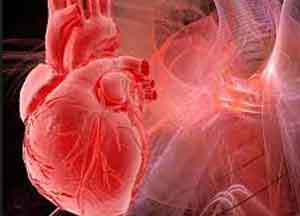- Home
- Editorial
- News
- Practice Guidelines
- Anesthesiology Guidelines
- Cancer Guidelines
- Cardiac Sciences Guidelines
- Critical Care Guidelines
- Dentistry Guidelines
- Dermatology Guidelines
- Diabetes and Endo Guidelines
- Diagnostics Guidelines
- ENT Guidelines
- Featured Practice Guidelines
- Gastroenterology Guidelines
- Geriatrics Guidelines
- Medicine Guidelines
- Nephrology Guidelines
- Neurosciences Guidelines
- Obs and Gynae Guidelines
- Ophthalmology Guidelines
- Orthopaedics Guidelines
- Paediatrics Guidelines
- Psychiatry Guidelines
- Pulmonology Guidelines
- Radiology Guidelines
- Surgery Guidelines
- Urology Guidelines
Coronary artery calcium PET/CT test a better predictor of MI than stress testing alone

Dr.Viet Le cardiovascular researcher in the Intermountain Medical Center Heart Institute and colleagues conducted a study to measure the level of calcium in the coronary arteries during stress testing using PET/CT test to determine a patient's risk of heart disease.The researchers found that incorporating these imaging technologies more precisely predicts who's at risk for heart attacks and similar threats in time to prevent them.Results of the study will be presented during the 2018 American College of Cardiology Scientific Session in Orlando.
"Typically, if you have chest pain, you come into the emergency department or see your doctor, and you may undergo a stress test to determine if you are suspected to have a blockage in your coronary arteries," said Viet Le, PA-C, lead author of the study, and a physician assistant and cardiovascular researcher in the Intermountain Medical Center Heart Institute.
"If you look at your coronary arteries like a hallway, the stress test essentially allows you to throw a ball down the hall, and if it makes it from point A to point B, there's no significant blockage," Le said. "If the hall is blocked and the ball doesn't roll all the way through, significant heart disease is likely."
Le, however, noted that can be misleading.
"Even if the ball makes it all the way down the hall, there may be boxes stacked up in the hallway, so the path is partially blocked, and if the boxes fall, you're in danger of a complete blockage. That's what testing for calcium does, it identifies existing disease. If we find calcium in your arteries, you're more likely to suffer a major adverse event, such as a heart attack or death, or you may require a stent or bypass surgery."
Researchers studies more than 8,000 patients at Intermountain Medical Center without a history of coronary artery disease, heart attack, or known restricted blood flow to the heart who came to a physician clinic or the hospital with symptoms of suspected heart disease and received a PET/CT imaging exam from 2013 to 2016.
Of those patients, researchers found that 53.2 percent had no calcium in the coronary arteries, while 46.8 percent did. Within 60 days, they found:
- 6 percent of patients with no calcium underwent coronary angiography, compared to 10.8 percent who had calcium.
- 8 percent of patients with no calcium went on to receive revascularization to restore blood flow to the heart, compared to 6.5 percent of patients who had calcium in their coronary arteries.
- 9 percent of patients with no calcium had a major adverse coronary artery event, such as a heart attack, compared to 6.0 percent of patients with calcium.
- 4 percent of patients with no calcium died, compared to 4.2 percent of patients with calcium
"Conducting a PET/CT test to measure coronary artery calcium means clinicians can tell the difference between the potential risk of heart disease and actually having a disease," Le said. "High blood pressure, diabetes, high cholesterol, and smoking are all risks of heart disease, yet many people who have those risks never have the disease or suffer an event. Coronary artery calcium is the disease -- and to an extent, it shows just how much of the disease is present."
The result of assessing calcium during a PET/CT stress test means care can be more precise while providing patients more incentive and motivation to improve their lifestyles.
"After a negative stress test, we may be likely to tell a patient, 'You're good, your symptoms today are not from your heart -- there's no coronary blockage,' and patients walk away feeling like Superman," Le said. "The coronary artery calcium PET/CT test allows us to recommend therapy sooner, if necessary. We can say, 'Well, the ball may have made it all the way down the hallway, but there's an obstruction lying in wait there, which means you've got heart disease. This isn't theoretical; you're at risk. You need to be more vigilant about exercise, diet, and your symptoms. We may need to initiate medical therapy'. We then can monitor those patients more aggressively to reduce their risk."
The PET/CT test also has the potential to proactively reduce healthcare costs -- since preventing a heart attack or similar event is the best, and least expensive, way to treat it. "Avoiding a heart attack is a huge economic benefit," Le said. "A similar benefit comes as clinicians prescribe medications more efficiently by identifying precisely who needs them."

Disclaimer: This site is primarily intended for healthcare professionals. Any content/information on this website does not replace the advice of medical and/or health professionals and should not be construed as medical/diagnostic advice/endorsement or prescription. Use of this site is subject to our terms of use, privacy policy, advertisement policy. © 2020 Minerva Medical Treatment Pvt Ltd